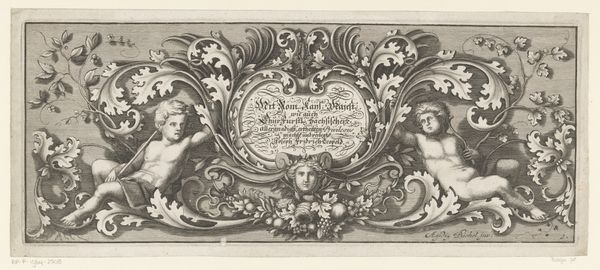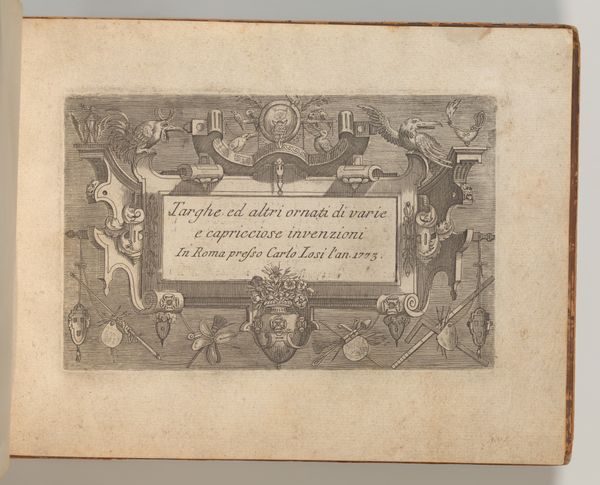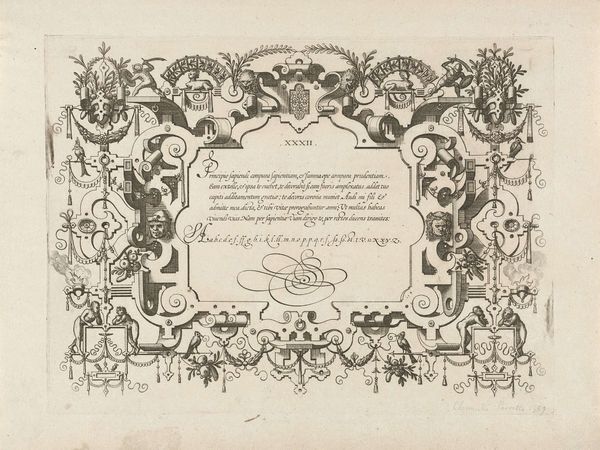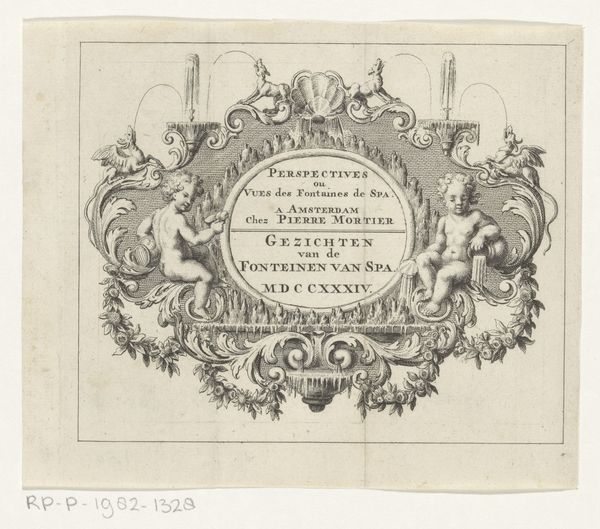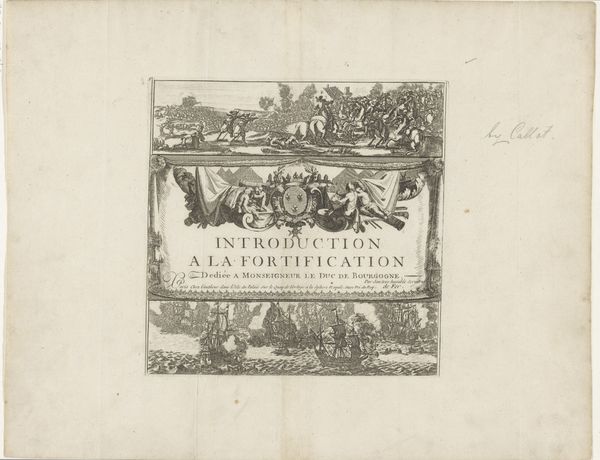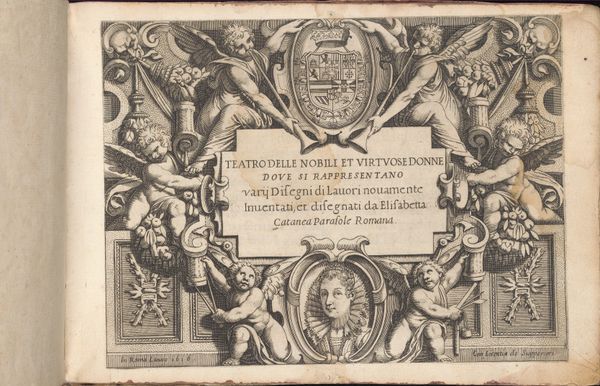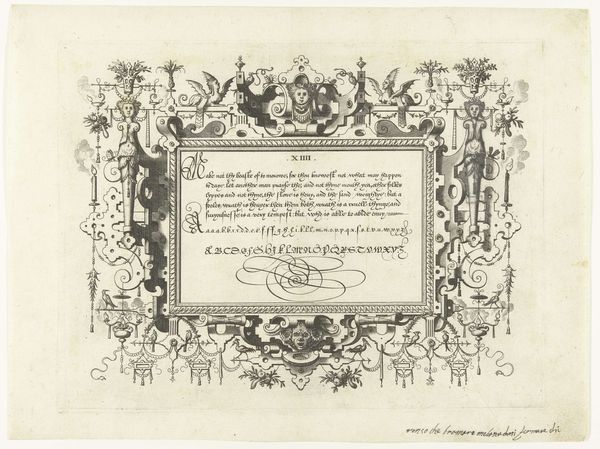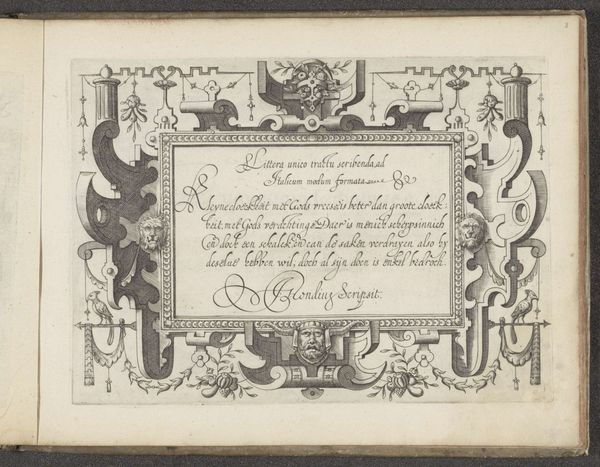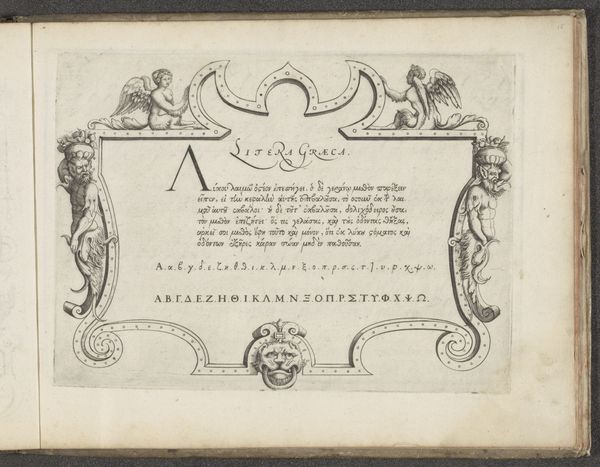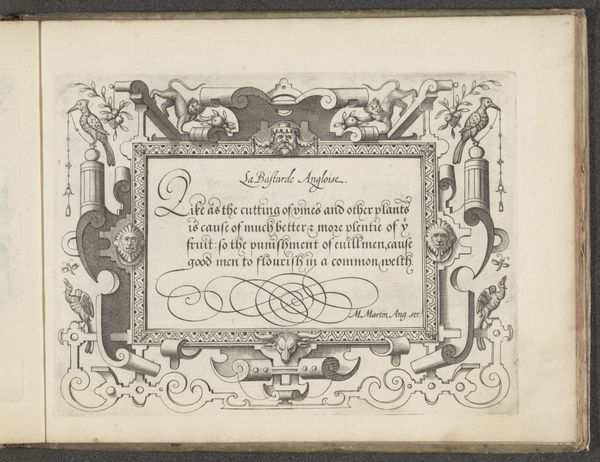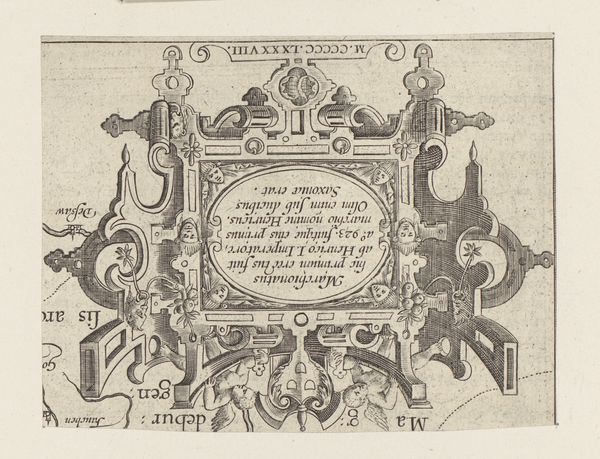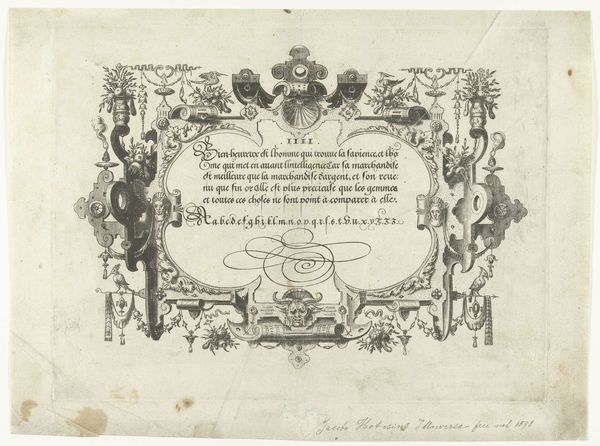
print, intaglio, engraving
# print
#
intaglio
#
mannerism
#
figuration
#
form
#
line
#
history-painting
#
engraving
Dimensions: height 111 mm, width 155 mm
Copyright: Rijks Museum: Open Domain
Editor: This is "Titelprent met putti en cherubijnen," or "Title page with putti and cherubs," created in 1604 by Raffaello Schiaminossi. It's an engraving, so intaglio printmaking, which gives it this incredibly fine detail. It feels almost overwhelmingly ornate, what’s your take on this work? Curator: It is a superb example of Mannerist printmaking circulating religious ideas. Look at the Latin inscription within the decorative border. Considering its public role, how might this print, likely part of a larger book, have functioned within the social and religious climate of early 17th-century Rome? Editor: So, not just a pretty picture, but a piece of propaganda? Curator: Propaganda is a loaded word, but in a way, yes. Prints like this helped disseminate and reinforce the doctrines of the Catholic Church, especially during the Counter-Reformation. The cherubs and elaborate frame aren't just decorative; they lend authority to the text about the mysteries of the Rosary. Notice how the artist has placed this image within a political and religious sphere. Where else might we find this artistic interplay with politics? Editor: Thinking about court portraits, maybe? Used to convey power through symbols and classical references. Curator: Exactly! And the distribution of prints democratized this imagery, moving it beyond the elite circles of the court. These images became widely available to reinforce the church's power structures across social strata. What does this say about access to art and the interpretation of its message? Editor: I never considered the accessibility factor. This makes me think differently about who was intended to view the art, and what influence art holds to shift power dynamics! Curator: It’s vital to remember art is rarely created in a vacuum. Context – religious, political, economic – deeply shapes not just what we see, but how it was originally intended to be seen.
Comments
No comments
Be the first to comment and join the conversation on the ultimate creative platform.
